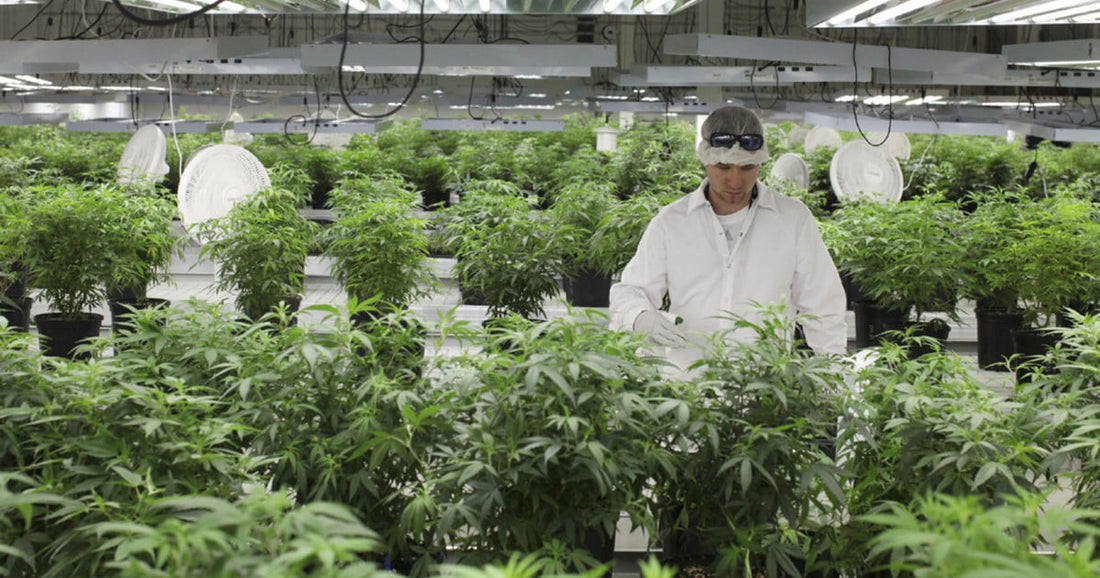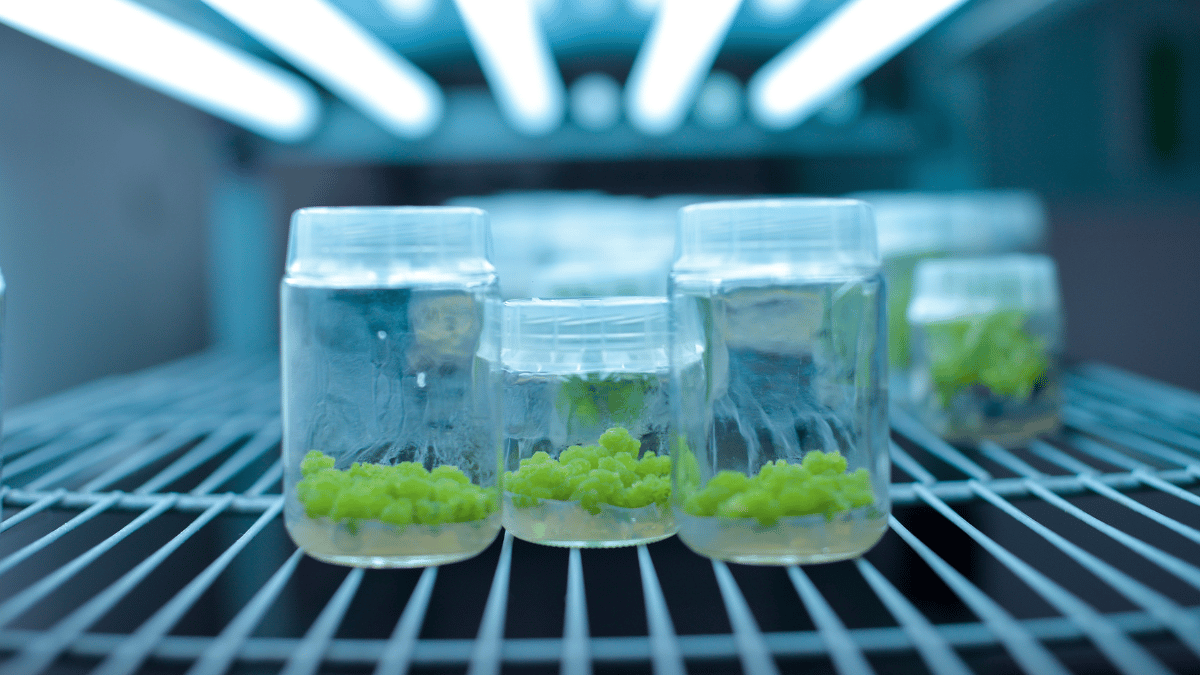
Using Tissue Culture in the Hemp process


Cultivators in the hemp industry are not new to the idea of using cloning to propagate their hemp crops. Cloning has been used even before the recent boom in the hemp market, as cultivators in the Netherlands (and other countries where cannabis is both legal and illegally cultivated) seek to preserve certain strain genetics. However, the most common method of cloning (where a rooted cutting is removed from a mother plant and replant) seems to be leaving the spotlight for a slightly different method: tissue culture. But how is tissue culture used in the hemp cultivation process? We have already looked at how tissue culture could map out the future of hemp cultivation, but in this article, we will look at how tissue culture is currently being used by hemp and cannabis cultivators.
Let’s Recap: What is Tissue Culture?
The cultivation of plants using tissue culture is a form of micropropagation, where only a small portion of a plant (sometimes only a few cells) are required to grow new plants. In contrast to traditional cloning, cultivators do not need to use rooted parts of the mother plant, although the tissue culture process does require stringent protocol observations.
A little bit on the history of tissue culture:
Although it could spell a transformation for the propagation of cannabis plants, and therefore a transformation for the cannabis industry as a whole, tissue culture was initially taken advantage of about 40 years ago. Since then, it has spread throughout industries, especially agricultural sectors.
Recently, we have witnessed how the cannabis industry has adopted tissue culture.
Despite what some media may proclaim, tissue culture is not just another passing fad in the cannabis industry. Tissue culture is causing significant breakthroughs for many businesses in the cannabis sector.
Defining Tissue Culture
Tissue culture is the process of growing new plants in an artificial medium, using cells from living plant matter. So, this means that, by using tissue culture, it is possible to propagate a new plant using just one living cell.
Plant tissue culture, however, is not limited to only one technique. It is a term used to cover a variety of techniques that follow the same principles. There are many parameters that must be followed; below are two of the most essential:
- The tissues need to be grown under stringently sterile conditions.
- The tissues need to be grown in culture media. This culture media should offer the new plant matter proper nutrients and hormones to encourage healthy root and shoot development. Culture media commonly contains agar, as well as an assortment of macro and micronutrients.
Whether used in Big Ag, commercial-scale food grows, or in the backyards of many avid DIY growers, the tissue culture process in the hemp industry is being used increasingly across the board for preserving plant genetics and propagating plant inventory. But there is another highlight to the increasingly impressive repertoire of tissue culture: the quality that it can produce. In the hemp industry, quality is critical, for both profits as well as public safety.
Let’s look at how the cannabis industry is thriving from the use of tissue culture:
Through tissue culture, cultivators can clean up the genetics of their plants. And once they have isolated the genetics they prefer, this genetic library can be maintained and be kept free of harmful pathogens. The results of this purified genomic library? Higher yields, increased speed of plant delivery, and increased potency.
Genetic preservation is becoming increasingly essential in the cannabis industry, as we see a plethora of cross strains, new strains and mixes on a weekly basis. While this in itself is not a negative, it can pose an indirect risk to the preservation of landrace strains and other strains that are loved and enjoyed for their originality.
Although not a CBD only hemp strain, the popular strain ‘Durban Poison’ can be used as an example of this lack of genetic precision. This strain, coming from the warm and friendly shores of the South African port city, Durban, has faced the threat of contamination. According to studies, the majority of strains labeled and marketed as ‘Durban Poison’ did not carry the signature genetic makeup. Today, finding the original DP strain is difficult. However, thanks to tissue culture, these genes can be preserved for an indefinite amount of time without high amounts of labor.
Using Tissue Culture to Create Seeds
Although tissue culture is most commonly used to propagate mature plants, it can also be used to create seeds. However, the sterile environment would need to be maintained to take the plant from seed to maturity.
Comparing Tissue Culture and Traditional Cloning
Traditional cloning refers to clones made using cuttings from the mother plant, while tissue culture refers to a new plant being cultivated from just a few cells. If we look at that comparison, we can say that in the short term, clones from cuttings are likely to reach maturity faster than a tissue culture propagated plant. However, if the correct propagation protocols are followed, then the tissue culture plant will present fewer maintenance issues, as there will be less diseases and exposure to pathogens. Moreover, traditional cloning can take up much more space than tissue culture. Therefore, using tissue culture, a grower can increase their yield by increasing the sheer volume of propagated plants. This offers efficiency on a scale that is incomparable to traditional cloning, especially for large scale grows.
Aside from the use of tissue culture in large-scale commercial hemp productions, DIY home growers and small scale growers are steadily realizing the benefits of using tissue culture. As tissue culture is used increasingly in the hemp industry, we are bound to see new advances in tissue culture technology in the future.
Blog Categories
View by Level
Popular Blogs

Callus Culture: Definition and Applications
Introduction Tissue culture is not just one technique! Yes, you heard right! As you know, tissue culture is an advanced...
Read More
6 Plant Tissue Culture Books to Keep Learning
Introduction Most of us are fans of books when it comes to learning a topic in detail and in a...
Read MoreSubscribe to Our Newsletter








Join the conversation
Your email address will not be published. Required fields are marked